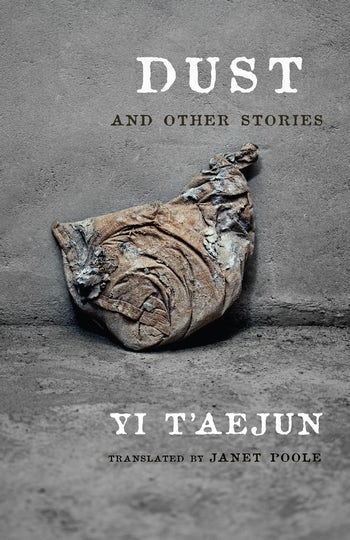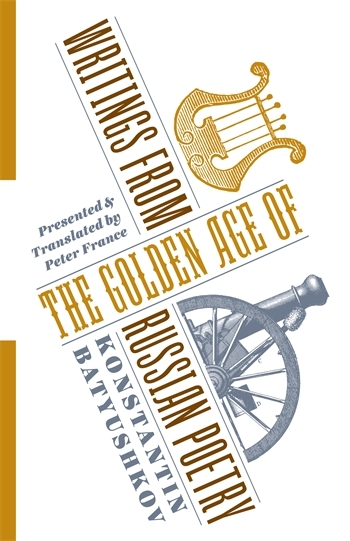Janet Poole on Yi T’aejun and the Literature of Two Koreas

Today’s National Translation Month post is written by Janet Poole, a scholar of Korean literature and the translator of Dust and Other Stories by Yi T’aejun and other works.
Remember to enter our drawing for a chance to win a copy of this book or any of the other titles we’re featuring this week! The drawing closes today Friday, September 7th at 1:00 pm EDT.
• • • • • •
As Donald Trump blasts his way through the delicate challenge of negotiating denuclearisation with North Korea, it is worth reminding ourselves that his equally rambunctious counterpart Kim Jong-un also leads a nation that was founded upon dreams of emancipation. North Korea emerged from thirty-five years of colonial occupation of the Korean peninsula by Japan and three years of a peninsula divided into two occupation regimes imposed by the US and the USSR. This year marks seventy years since the founding of the Democratic People’s Republic of Korea, a process that constitutes the background to the title story in Yi T’aejun’s Dust and Other Stories. By the time Yi wrote “Dust” in 1950, civil war lay only months ahead. Perhaps it is not surprising that the story ends in death and despair. I don’t want to give too much away for those who choose to read the story, but what I do want to say is that Yi’s fiction—with its storylines, language and its very style—offers readers today a sense of the impetus for those dreams of emancipation.
Yi himself was a most unlikely candidate to flee from the southern half of the peninsula to the communist north in 1946. A committed dilettante and a dreamer, he believed passionately in literature and art as realms that could nurture the individual. One of his many poetic essays from the 1930s describes this solitary scene:
“Sometimes I sit and wait from daylight hours. The night meanders in through the closed door. It removes my mother’s face from a photograph hung on the wall, coils around a lone blossom on my desk, its eyes wide open to the very end, and then I find myself in the depth of the mountains. There I encounter the cries of insects and wait for the dream that will surely visit…”
We can only wish in hindsight that Yi hadn’t shifted his abode so decisively. But he was not alone: large numbers of artists, musicians, writers and intellectuals, especially those from colonial Korea’s vibrant modernist scene, chose the north over the south, risking their lives to cross the 38th parallel in the late 1940s. Unfortunately, after initial acceptance, many of them suffered similar fates to Yi T’aejun, of whose ending we are still unsure but which seems to have involved several periods of forced internal exile in the 1950s and most certainly separation from the writing he adored. These Korean artists shared the visions of so many artists around the world at the time, who in the wake of fascist occupations aligned themselves with socialist reconfigurations of the common good. Theirs was a dream as expansive as Yi’s own dream of his inner mountains, and a dream which still today we should neither despise nor forget. The eventual path taken by such postcolonial states as North Korea was never inevitable.
“Yi’s fiction—with its storylines, language and its very style—offers readers today a sense of the impetus for those dreams of emancipation.”
Of Yi’s colonial-era short stories, “A Tale of Rabbits” both compels and unsettles with its light suggestion of the power and brutality of Japan’s colonial rule. A fairy tale of sorts, it yet manages to suggest the horror of its gentle protagonist Hyŏn, who has taken up rabbit breeding in order to feed his family during wartime and finds himself in a bookstore reading up on the six recommended ways to slaughter a rabbit. As the reality dawns upon him that his own genteel backyard is to become the site of an entirely unforeseen bloodbath, he is paralyzed by his own complicity. Yi’s story is part comedy part tragedy and achieves what his best writing manages: to illuminate a scene both of human poignancy and historical despair. Because by 1941 when Yi wrote this story, the bloodbath was already underway deep into the Chinese continent and, of course, on the other side of the globe too. The events that were to propel the migration northward and desire for a new kind of society had already taken their hold.
Throughout his life Yi wrote under the most constraining of circumstances, the traces of which seem to shape his restrained sentences. As a translator I chose not to embellish the simple yet elegant turns of phrase and rhetoric that distinguished Yi amongst his peers. I find his sentences, with their strangely melancholic atmosphere, suggestive of that constrained world. As with many Korean writers of the time, the realities of fascism, war and ideological polarization do not often appear directly in his work, but seem to shape its very form instead. So many stories end, as does “A Tale of Rabbits,” with the phrase “white clouds hovered overhead.” What could such a customary phrase really be gesturing towards? When Yi traveled to the Soviet Union as part of a North Korean delegation in 1946, he wrote of feeling “like a bird flying through the sky for the first time, having been freed from a cage.” He may well have misrecognized the freedom offered by the Stalinist state, but the dream of freedom was, and remains, oh so real.
“White clouds hovered overhead.”
• • • • • •
You can find out more about the writer Yi T’aejun in Janet Poole’s introduction to Dust and Other Stories in the excerpt below.
Read Yi’s story “A Tale of Rabbits”
Read the essay “Night.”








